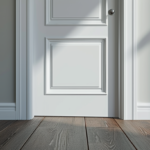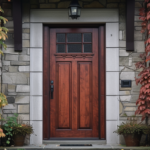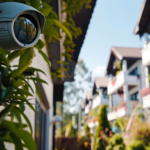Creating a koi pond can be a rewarding and aesthetically pleasing addition to any outdoor space. This article will provide you with a comprehensive guide on the essential steps to successfully design, install, and maintain your own koi pond. From selecting the ideal location and materials to installing necessary equipment, we will equip you with the knowledge and expertise to create a thriving aquatic habitat for these beautiful and graceful fish.
Choosing the Perfect Location
When selecting the perfect location for a koi pond, it is crucial to consider the surrounding landscape’s overall aesthetic and the pond’s future owner’s preferences. Two important factors to consider are sunlight exposure and proximity to trees. Sunlight exposure is essential for the health and well-being of the koi fish. Koi need sunlight to thrive and maintain their bright, vibrant colors. Therefore, it is important to choose a location that receives ample sunlight throughout the day. Additionally, evaluating the proximity to trees is vital. While trees can provide shade and create a tranquil environment, falling leaves can pose a problem by clogging the pond and affecting the water quality. Therefore, it is important to strike a balance between having trees nearby for shade and ensuring they are not too close to cause maintenance issues.
Designing Your Koi Pond
To create a beautiful and functional koi pond, careful consideration must be given to the design and layout, as well as the selection of appropriate materials and equipment. Pond design plays a crucial role in determining the overall aesthetic appeal and functionality of the pond. When designing a koi pond, it is important to consider factors such as the size and shape of the pond, the depth of the water, and the incorporation of features like rocks, plants, and filtration systems. Additionally, landscaping ideas can be used to enhance the visual appeal of the pond, such as adding surrounding vegetation, decorative stones, or even a waterfall. By carefully planning and implementing a well-thought-out design, koi pond enthusiasts can create a stunning and harmonious outdoor space that both showcases their beloved koi fish and provides a relaxing and serene environment for themselves and their guests.
Selecting the Right Materials
A variety of materials, including high-quality liners, durable pumps, and sturdy filtration systems, are essential for creating a long-lasting and functional koi pond. When it comes to filtration systems, it is important to compare different options to determine which one will provide the best water quality for your koi. Some popular choices include mechanical filters, biological filters, and UV sterilizers. Mechanical filters remove physical debris from the water, while biological filters promote the growth of beneficial bacteria that break down harmful substances. UV sterilizers use ultraviolet light to kill bacteria and algae. Additionally, determining the ideal pond size is crucial for the health and well-being of your koi. On average, each koi requires about 250 gallons of water, so make sure to consider the number of koi you plan to have when determining the size of your pond.
Installing the Necessary Equipment
The installation of the necessary equipment, such as the filtration system and pump, is a critical step in creating a functional and thriving koi pond. Choosing the right filtration system is essential to maintain optimal water quality for the koi. There are different types of filtration systems available, including mechanical, biological, and chemical filters. Mechanical filters remove debris and particles from the water, while biological filters help to break down harmful substances and maintain a healthy balance of bacteria. Chemical filters can be used to remove impurities and improve water clarity. Proper water circulation is also crucial for a koi pond. It helps to distribute oxygen throughout the water and prevents stagnation. The pump should be appropriately sized to provide sufficient water flow and ensure that all areas of the pond receive adequate circulation. By selecting the right filtration system and ensuring proper water circulation, the koi pond can thrive and provide a beautiful and healthy environment for the fish.
Maintaining Your Koi Pond for Longevity
In order to ensure the longevity of your koi pond, regular maintenance and monitoring of water quality are essential. Cleaning techniques play a crucial role in maintaining a healthy environment for your koi fish. Regularly removing debris, such as fallen leaves and excess algae, helps prevent the accumulation of harmful substances that can affect water quality. Additionally, maintaining proper filtration systems, such as biological and mechanical filters, aids in removing impurities. It is also important to regularly test the water parameters, such as pH, ammonia, nitrate, and nitrite levels. By monitoring these levels and taking necessary corrective actions, you can prevent common koi pond diseases, such as bacterial or fungal infections. Implementing a comprehensive maintenance routine and utilizing appropriate cleaning techniques will ensure the well-being and longevity of your koi pond.



